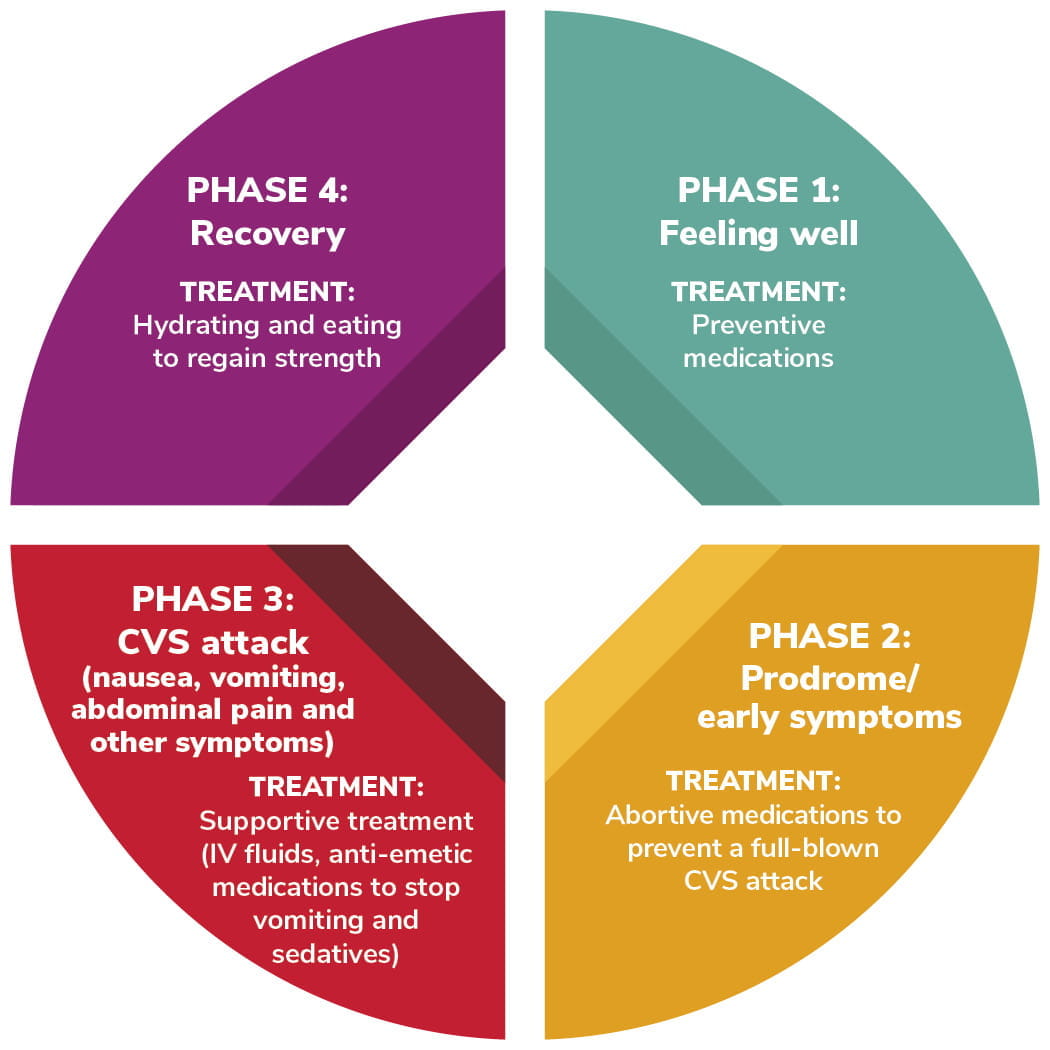
Imagine experiencing episodes of vomiting the way others get migraines. Whether you’re at work or on a dream vacation, you suddenly suffer from severe bouts of vomiting and retching that can last from a few hours to many days. Every few weeks or months, the cycle leaves you weak and dehydrated.
This is the reality of living with cyclic vomiting syndrome (CVS), which can affect people of all ages.
The good news is that CVS can be managed with medications as well as other therapies, though there is no cure. For years, there was little awareness among gastroenterologists about this chronic illness, though it was first described in 1862. CVS was relegated to a few lines in standard gastrointestinal medicine textbooks and was typically only diagnosed in children.
Understanding the causes of cyclic vomiting syndrome, and developing better treatments
Early in my career specializing in digestive illnesses, a young woman came to me after experiencing bouts of vomiting. She was engaged to be married and feared that the unexplained illness was straining her relationship. She’d been told it must be “all in her head” and was referred to me — the only female gastrointerologist in that hospital at the time.
Fortunately for my patient, I was familiar with CVS because my husband is a pediatric gastroenterologist. Though CVS wasn’t often recognized in adults, her clinical picture was classic for the condition. After my husband confirmed my suspicion that these symptoms were indeed consistent with CVS, I treated this patient and she improved dramatically.
This experience left a lasting impression and fostered my interest in treating patients with CVS as well as pursuing research to better understand the underlying cause and to develop better therapies.
In the nearly two decades since that first patient, I’ve led and published multiple studies to provide us with a better understanding of CVS. Today, we know that cyclic vomiting syndrome affects 2% of the population in the United States, though data is sparse in other countries.
With proper treatment and support, we can help many patients with CVS live full and healthy lives.
Cyclic vomiting syndrome affects every person differently
The frequency and duration of CVS varies for every person. Some people with CVS might have three episodes of extreme vomiting a year. Others can have episodes as often as every month. Some patients can manage their symptoms at home, while others have been to the emergency department for dehydration as many as 200 times, in some extreme cases.
The four phases of CVS
 What’s consistent is that the vomiting starts abruptly, occurs at least three times a year and cannot be explained by another disorder. Between episodes, there are times of no symptoms, or mild symptoms of nausea or abdominal pain.
What’s consistent is that the vomiting starts abruptly, occurs at least three times a year and cannot be explained by another disorder. Between episodes, there are times of no symptoms, or mild symptoms of nausea or abdominal pain.
Prodromal phase (early phase): intense nausea or sense of an impending CVS attack
Vomiting phase: severe vomiting and retching
Recovery: slowly regaining energy, hydrating and eating
Asymptomatic periods: feeling generally well or your normal self
Cyclic vomiting and migraines
Although they're separate conditions, many people with cyclic vomiting syndrome also have a history of migraine headaches. Among adult CVS patients, 57% report having a first and/or second‐degree relative with migraines or migraine variants.
Most children with CVS outgrow their CVS symptoms and develop migraine headache in early adulthood. There’s a significant overlap in treatment, with many of the medications that are used for migraine also being used for CVS.
Developing guidelines to manage CVS
To bridge the knowledge gap, I spearheaded the effort to create evidence-based management guidelines for CVS in collaboration with the Cyclic Vomiting Syndrome Association and the American Neurogastroenterology and Motility Society. With these guidelines in place, we hope that more patients receive timely and accurate care.
Key points in managing CVS:
- Identify and avoid triggers and maintain healthy habits, such as good night’s sleep, a healthy diet and managing stress.
- Medications to abort or stop CVS symptoms can be used just like some people use them to treat migraines.
- Assess severity, and prevent episodes in moderate‐to‐severe CVS with medications.
- Treat related issues, such as anxiety and depression, which can occur with CVS. This can improve overall quality of life as well as CVS outcomes.
Today, with clear guidelines on diagnosing cyclic vomiting syndrome and how to treat it, there’s far more interest in the disorder than in 2005, when I first began working with these patients. Gastroenterologists are now aware this is not a rare disorder in adults.
Research to develop new therapies
Significant gaps remain in understanding the causes, symptoms, related conditions and effective management of cyclic vomiting syndrome. Research on CVS today focuses on topics like pathophysiology, genetics and new treatment. Even complementary therapies like certain types of meditation can help.
Current research on CVS
Regulating vomiting in the brain: A part of the brain that monitors nausea and vomiting is called the endocannabinoid system. Our bodies produce substances similar to cannabis that regulate functions and processes such as stress, sleep, mood and appetite. When functioning properly, this marijuana-like substance helps prevent nausea and vomiting disorders. This study shows that the endocannabinoid system might not be functioning well in patients with CVS.
Novel therapies
New drugs for CVS are in the pipeline, with ongoing studies to determine their effectiveness. There is also research on which treatments are most effective, with the least side effects.
Complementary therapies
This study showed that "heartfulness meditation" combined with a specific integrated health care model can improve outcomes, leading to better quality of life, sleep and stress levels.
Marijuana use in CVS
Many patients reported in one study that using marijuana and taking hot showers improved their symptoms. These patients noted the most significant improvement with stress levels, appetite and nausea. However, chronic use of marijuana, especially when used on a near-daily basis, can lead to vomiting. With rapid legalization in the U.S., availability and increasing use of such products, we need further research and public awareness of the possible harmful effects in some people.
Leading the future of CVS research at Ohio State
Since that first patient, I’ve had the opportunity to work closely with the Cyclic Vomiting Syndrome Association and many experts and serve as the association's chief medical adviser for more than 15 years.
I’ve helped conduct various family conferences and cochaired the third NIH-sponsored Third International Conference on CVS symposium at The Ohio State University.
I also co-edited the first-ever comprehensive book on cyclic vomiting syndrome, which provides the most up-to-date information and research on CVS and serves as a reference for anyone who deals with this disorder.
Understanding the importance of training the future generation of learners, we have now established the first-ever CVS fellowship in the nation, right here at Ohio State.
Looking ahead to CVS treatment advancements
As we continue to unlock the mysteries of CVS, we envision a future where better treatments provide relief for those suffering from this challenging condition. Investing in research and advancements isn’t just essential — it's our responsibility as gastroenterology experts.
Though CVS poses significant challenges, with the collective efforts of medical professionals, researchers and patient communities, we can provide hope and improved quality of life for those affected. Together, we can make a difference, turning the tide against cyclic vomiting syndrome and offering hope to millions worldwide.






